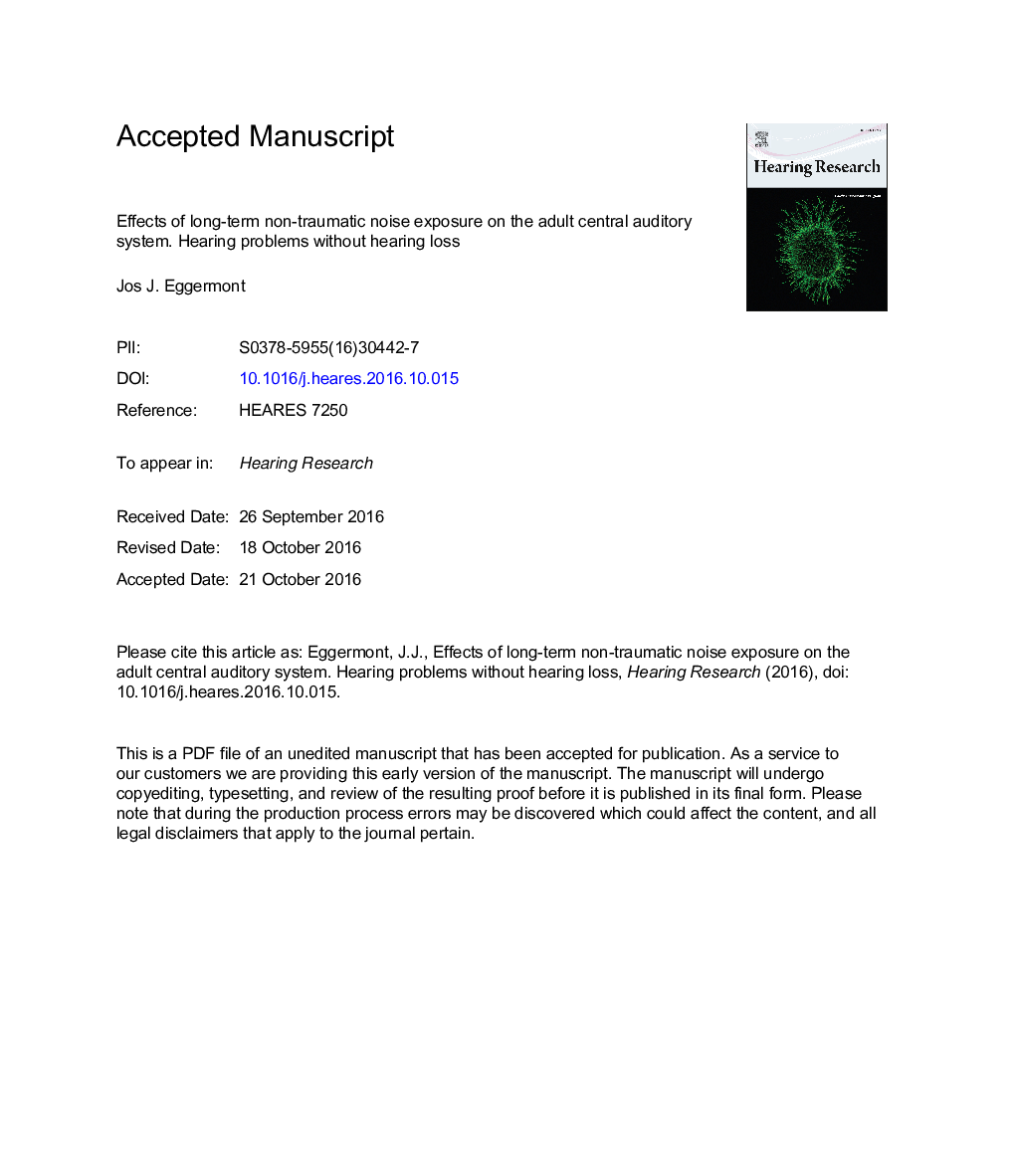| Article ID | Journal | Published Year | Pages | File Type |
|---|---|---|---|---|
| 5739317 | Hearing Research | 2017 | 43 Pages |
Abstract
It is known that hearing loss induces plastic changes in the brain, causing loudness recruitment and hyperacusis, increased spontaneous firing rates and neural synchrony, reorganizations of the cortical tonotopic maps, and tinnitus. Much less in known about the central effects of exposure to sounds that cause a temporary hearing loss, affect the ribbon synapses in the inner hair cells, and cause a loss of high-threshold auditory nerve fibers. In contrast there is a wealth of information about central effects of long-duration sound exposures at levels â¤80 dB SPL that do not even cause a temporary hearing loss. The central effects for these moderate level exposures described in this review include changes in central gain, increased spontaneous firing rates and neural synchrony, and reorganization of the cortical tonotopic map. A putative mechanism is outlined, and the effect of the acoustic environment during the recovery process is illustrated. Parallels are drawn with hearing problems in humans with long-duration exposures to occupational noise but with clinical normal hearing.
Related Topics
Life Sciences
Neuroscience
Sensory Systems
Authors
Jos J. Eggermont,
